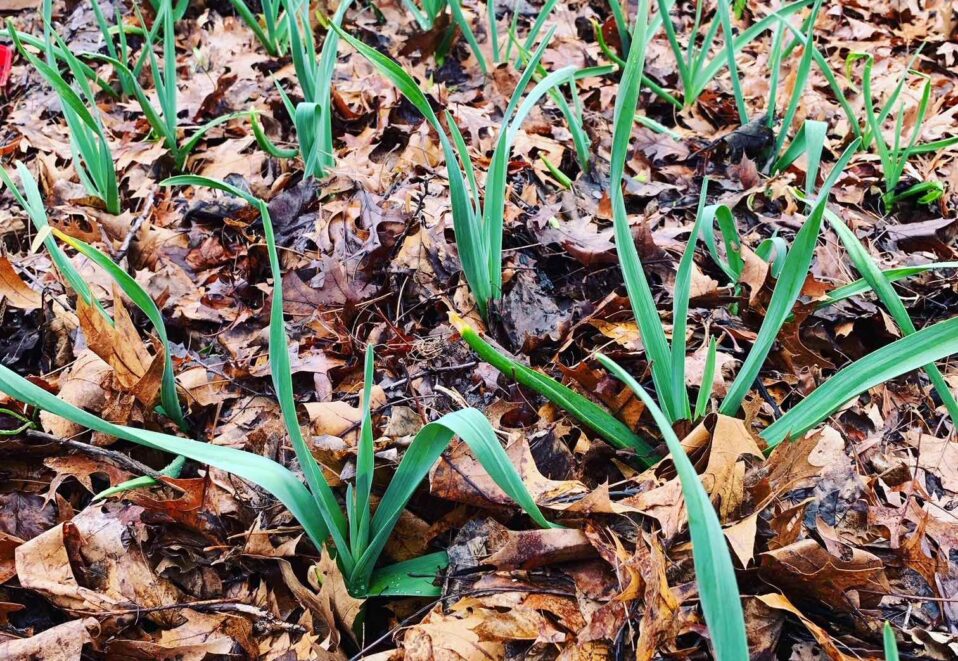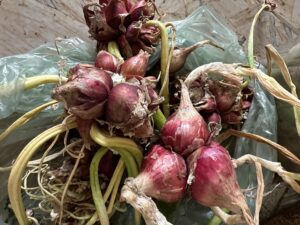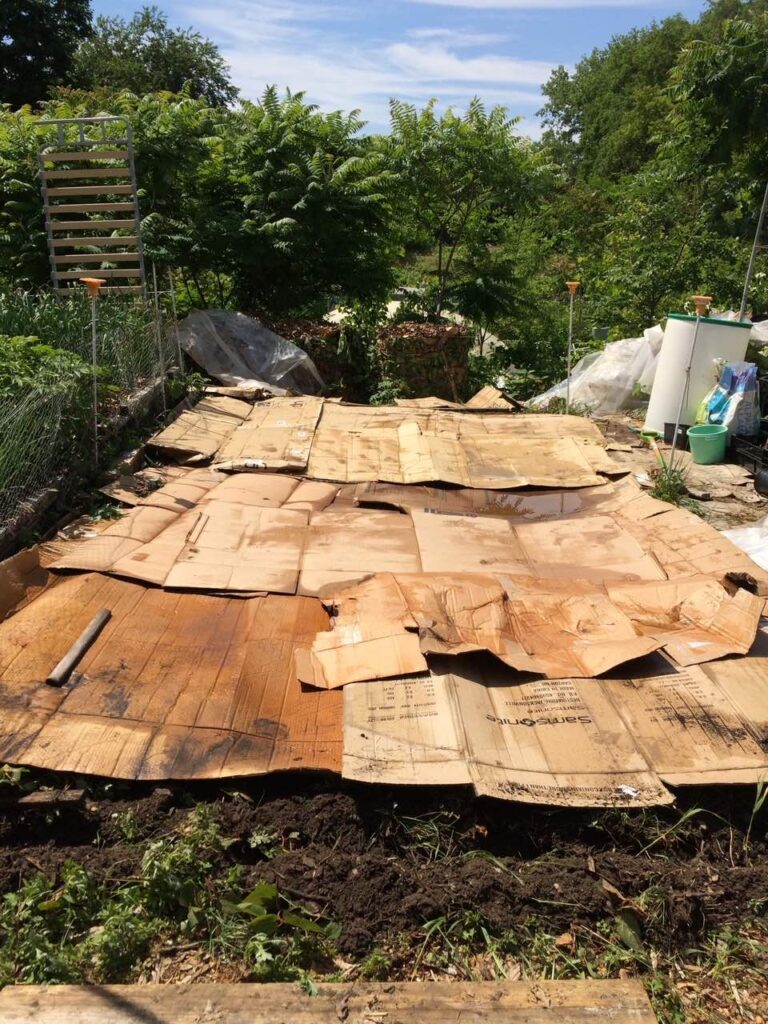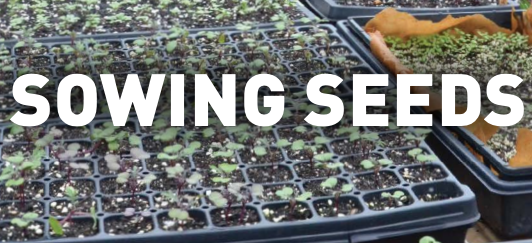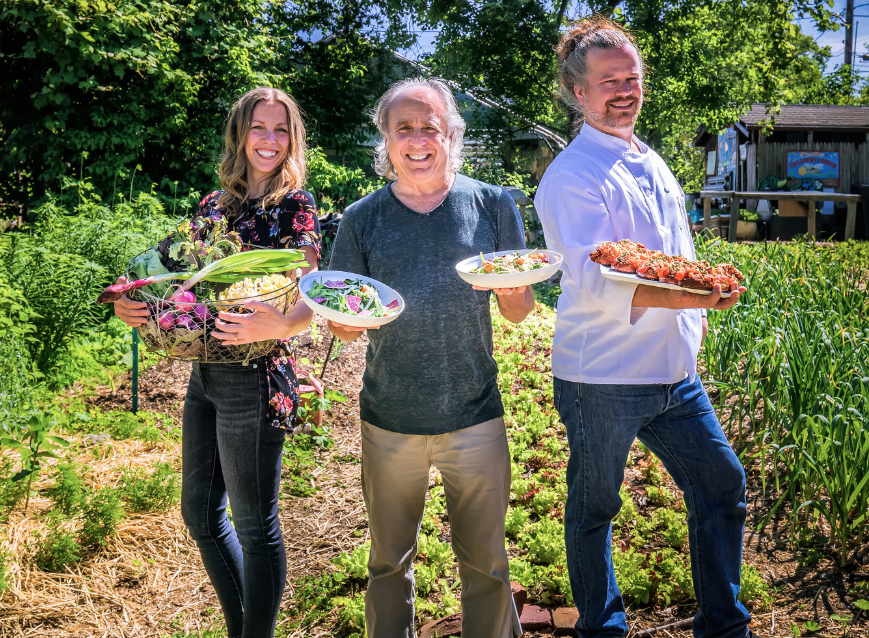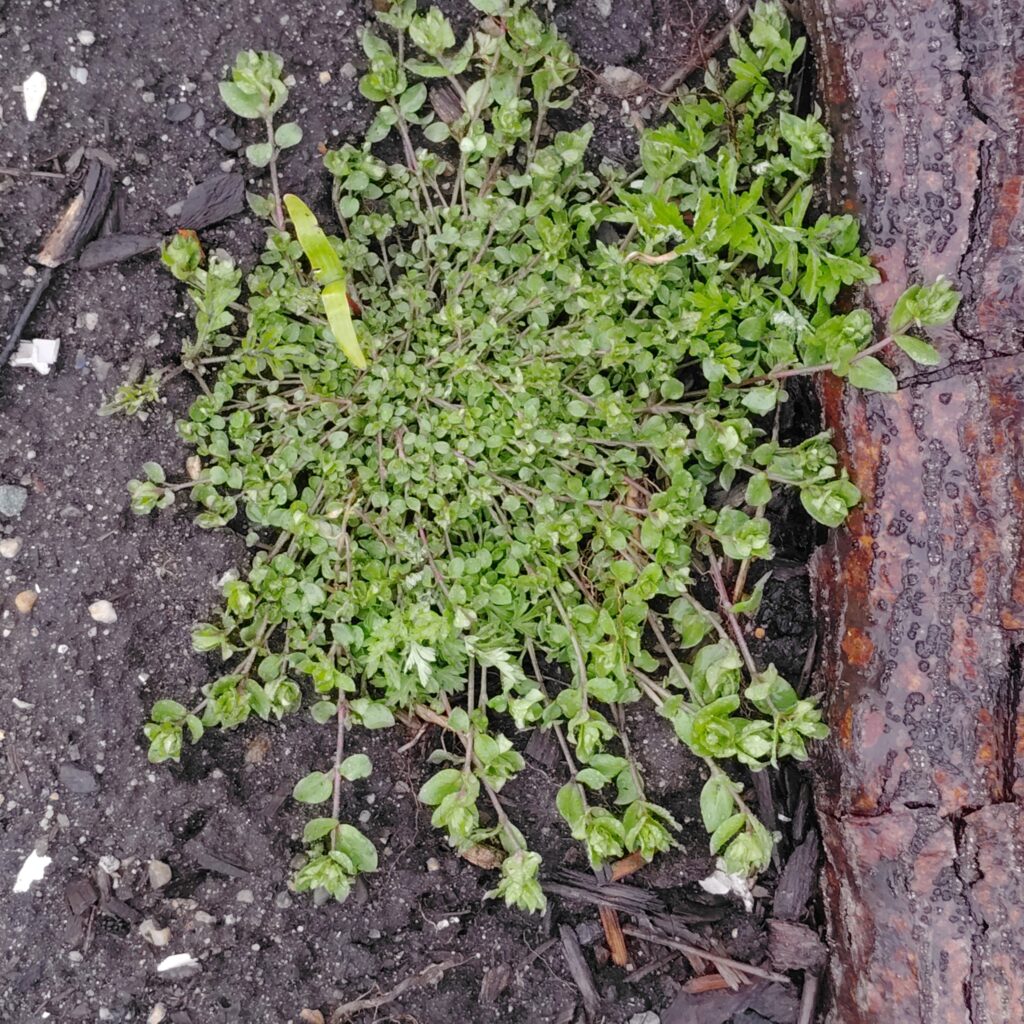
Common Chickweed, edible, found at the April 12 P&P BioBlitz
Peace and Plenty Community Garden completed its year-long BioBlitz series on Saturday, October 11, with 16 dedicated identifiers documenting an impressive 262 species on a day that began cloudy and cool but welcomed warming sunshine and, notably, many flying invertebrates that followed. Representatives from the Rhode Island Natural History Survey, Audubon RI, Rhode Island Plant Insect Pollinator Network, Providence Neighborhood Planting Program, Southside Community Land Trust, and 15 Minute Field Trips participated alongside four community scientists, including two teen neighbors who discovered a previously unidentified ant species. A neighborhood family with a three-year-old daughter who enthusiastically netted species for identification joined the survey, while photographer and videographer Catherine McCray documented the event and musician Phil Edmunds accompanied the search with lilting tunes from his concertina.
Melissa Guillet of 15 Minute Field Trips tabulated the October findings, which included wreath lichen, turkey tail, dusty slug, wolf spider, mining bee, blowfly, Asian lady beetle, oriental bittersweet, monarda punctata, daisy fleabane, wild cucumber, dark-eyed junco, and eastern grey squirrel. A notable moment occurred when yellow jackets were observed eating a spotted lanternfly.
The year-long initiative brought together diverse participants throughout three seasons. The inaugural BioBlitz on Saturday, April 12, saw 17 citizen scientists brave cold, damp, windy, and rainy conditions to document the garden’s biodiversity. The diverse group included environmentalists from the Rhode Island Wild Plant Society, Audubon, 15 Minute Field Trips, and the Providence Urban Wildlife Conservation Partnership, alongside gardeners, an artist, a musician, and Wheeler School students who identified 72 species including cuspidate earth moss, false turkey tail fungi, common chickweed, furry snake millipedes, and red-bellied woodpeckers.
The second BioBlitz took place on Saturday, July 12, with 30 community members joining the summer survey under beautiful weather conditions, a welcome contrast to April’s challenging start. This expanded gathering included representatives from the Rhode Island Natural History Survey, Audubon RI, Rhode Island Environmental Education Association, Providence Preservation Society, Providence Neighborhood Planting Program, and 15 Minute Field Trips, along with community scientists who served as species identifiers. The event was documented by videographer Greg Gerritt, photographers Sally Bozzuto and Catherine McCray, and freelance reporter Elizabeth Keiser, while musicians Phil Edmunds and Mike Hudson provided accompaniment and gardener Rafael Serrano painted during the survey. The comprehensive species identification work brought the total documented species count to an impressive 211 across both BioBlitzes, with findings including star rosette lichen, brown-bellied bumblebees, and the invasive spotted lanternfly.
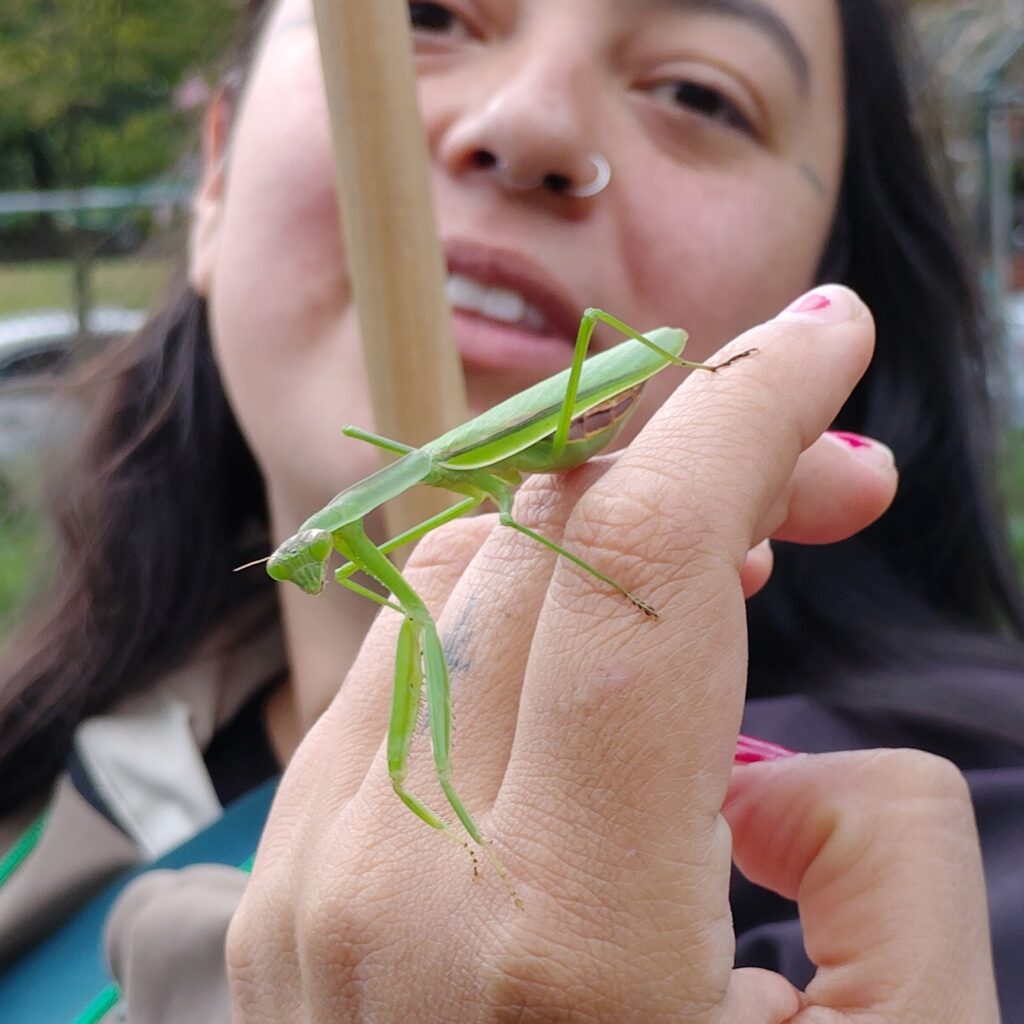
Tonay poses with a Chinese Praying Mantis, found at the October 11, 2025 BioBlitz at Peace & Plenty Community Garden
The year-long survey serves multiple educational goals beyond species documentation. The project helps gardeners understand their pivotal role in restorative earth care, demonstrates that gardening need not be solely extractive, reveals that many “weeds” are actually gardener-friendly, and shows how supporting wild populations can enhance both garden experience and vitality. This citizen science initiative helps identify invasive species and problem insects while informing strategies to support threatened pollinator populations, including Rhode Island’s declining bumblebee species. University of Rhode Island research suggests nearly half of the state’s historical bumblebee species may have disappeared. The BioBlitz revealed fascinating information about common garden species that many might overlook. For instance, common chickweed, often considered just a weed, is actually edible and highly nutritious.
Importantly, the BioBlitz demonstrates that all small urban green spaces, like Peace & Plenty Community Garden, play a vital yet often not fully understood role in Rhode Island’s rich and diverse natural landscapes, bringing these often fragmented and overlooked urban habitats forward so they are recognized, acknowledged, and supported. All findings were meticulously recorded and uploaded to iNaturalist, an online platform for sharing biodiversity information that helps scientists and nature enthusiasts identify species and track wildlife observations.
The next phase of the Bloom Rhode Island grant, that made this project possible, will focus on reviewing results to identify best-placed strategies to enhance the community garden experience and creating formats to share findings with a much wider audience. This capstone project aims to broadcast the important role smaller urban green spaces play in Rhode Island’s overall natural landscape while sharing learnings that will shape how the community garden continues to define future ways to support climate change through environmental stewardship and garden productivity. As Doug Victor, Peace and Plenty Garden Leader and host of the BioBlitzes, notes, these efforts are “succeeding in making sure our urban wild spaces are considered and counted.”


